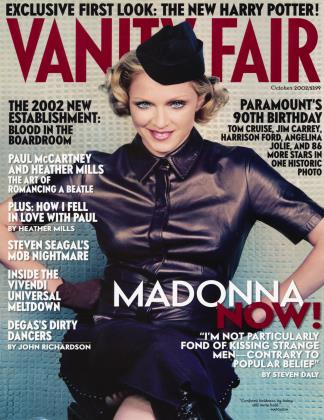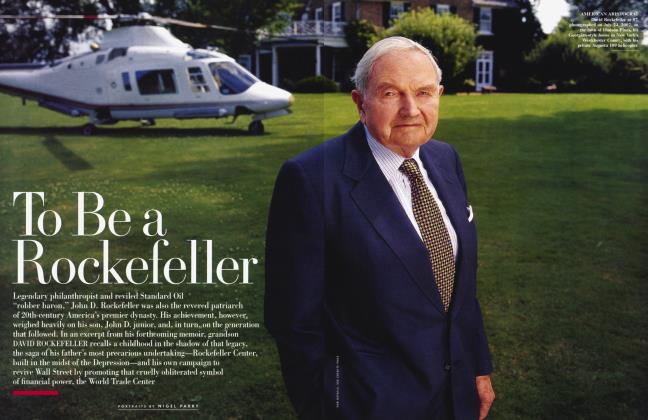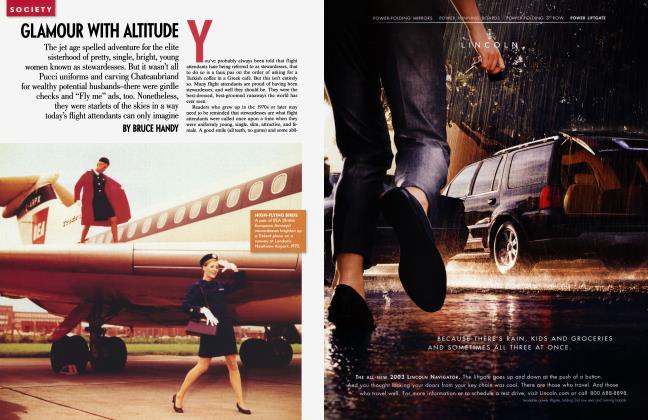Sign In to Your Account
Subscribers have complete access to the archive.
Sign In Not a Subscriber?Join NowTemples in the Sky
Anyone who lives in this fabulous, skyscraping metropolis is very likely to have his own little patented architecture tour for interested friends and out-of-towners. If the day is cooperative and the guests are willing, I can keep my exploration going for hours.
But I have also divided it into segments so that the poor souls I'm spiriting around can bail without appearing rude or uninterested. I have literary and political tours. A modernist tour. A tum-of-the-century one. And I have a tour in which I just point out quirks and oddities that spark my imagination: apartments with ballrooms or swimming pools; a building erected on a layer of cork to cushion it from the rumble of the trains beneath; the reliefs in the lobby of the Woolworth Building depicting Frank Woolworth and his architect, Cass Gilbert. The tour I never tire of is my skyscraper one. It is the expedition that most reflects my own wide-eyed hunger for the city when I moved here from Canada 24 years ago.
New York attracted the architectural stars of the last century like no other city did. How could it not be so? Locked to an island where horizontal sprawl was out of the question, dreamers and tycoons, aided by the invention of the elevator and the excitable minds of designers with thirsts for immortality, took to developing what could never have been imagined before—the heavens. This issue of Vanity Fair is rife with soaring architectural marvels built out of stone or steel and glass, ones that always make cameo appearances on my New York tours. In "Forever Modern," on page 318, Matt Tymauer tells the story of the building and recent renovation of Lever House, Gordon Bunshaft's tall, cool drink of water on Park Avenue. If great modernist architecture is about flotation, Lever House, now a half-century old, veritably shimmers above the sidewalk between 53rd and 54th Streets.
No family has had quite the impact on New York's skyline that the Rockefellers have. And in an excerpt from his new memoir, on page 342, David Rockefeller recalls the arc of a family dynasty that created two of the city's iconic landmarks: Raymond Hood's romantic 1930s epic, Rockefeller Center, and Minoru Yamasaki's spare World Trade Center towers. (So derided when they were built; now so terribly missed. And so large! Each floor was almost big enough to house two entire 24-story Lever Houses.)
Across the continent is another architectural jewel, Paramount Studios. I remember driving through the Bronson Gate for the first time more than two decades ago and shuddering with excitement at the lush lawns, the soundstages, and the low-slung writers' bungalows. I was outside the gate again this year for a historic group photograph by Annie Leibovitz of 90 stars who had been gathered together to celebrate Paramount's 90th anniversary. The result of that shoot, a three-panel keepsake, "The Paramount Century," appears on page 305. By the way, I have an L.A. architecture tour as well. And that glorious Paramount lot is a major stopover.
GRAYDON CARTER
 View Full Issue
View Full Issue












Subscribers have complete access to the archive.
Sign In Not a Subscriber?Join Now